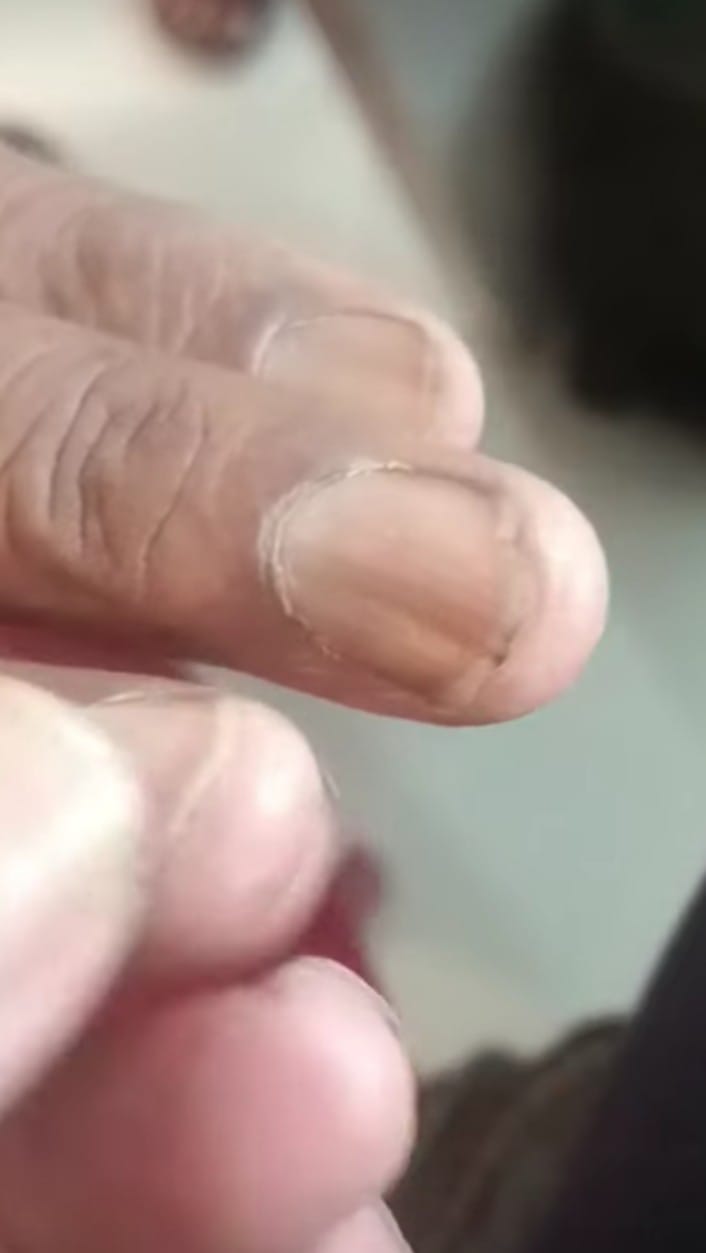
2024-04-23T05:15:03
Nail findings can be indicative of various systemic conditions, including anemia. Anemia is a condition characterized by a decrease in the number of red blood cells or hemoglobin in the blood, which can lead to a variety of nail changes. Here are some common nail findings associated with anemia: 1. Pallor (Pale Nail Beds): One of the most common nail findings in anemia is pallor of the nail beds. The nails may appear pale or whitish due to reduced blood flow and oxygenation. 2. Koilonychia (Spoon Nails): Koilonychia is a condition where the nails become concave or "spoon-shaped." This nail deformity is often associated with iron-deficiency anemia and can be a result of decreased hemoglobin levels affecting the nail bed. 3. Beau's Lines: Beau's lines are horizontal ridges or indentations that can develop across the nails. These lines are a sign of interrupted nail growth and can be seen in cases of severe anemia or other systemic illnesses. 4. Brittle or Thin Nails: Anemia can lead to brittle or thin nails that are prone to splitting, cracking, or breaking easily. This change is often due to the decreased oxygen and nutrient supply to the nail matrix, affecting nail growth and quality. 5. Splinter Hemorrhages: Splinter hemorrhages are tiny vertical lines or streaks that resemble splinters, which can appear under the nails. These hemorrhages are caused by small areas of bleeding under the nail plate and can be associated with various conditions, including anemia. 6. Onychoschizia (Nail Splitting): Onychoschizia is a condition characterized by nail splitting or peeling, which can occur due to decreased moisture and nutrients reaching the nail bed as a result of anemia. 7. Onychorrhexis (Brittle Nails): Onychorrhexis refers to brittle nails that are prone to breaking or splitting easily. This nail finding can be associated with chronic anemia and nutritional deficiencies affecting nail health. Conclusion: While these nail findings can be suggestive of anemia, it is essential to consult a healthcare professional for a proper diagnosis and evaluation. Anemia can have various underlying causes, including nutritional deficiencies, chronic diseases, or other medical conditions, which may require further investigation and management. Additionally, the presence of nail changes should be considered in the context of other clinical signs and symptoms, along with laboratory tests such as complete blood count (CBC) and iron studies, to confirm the diagnosis of anemia and determine the appropriate treatment approach. keywords: most searches on: people ask for: #integrityhospital #multispecialityhospital #besthospitalinnagpur #besthospitalnearme #besthospitalindighori #tophospitalinumredroad #criticalcareandtraumahospital #generalsurgery #laproscopicsurgery #bestorthopaedician #fracturetreatment #herniaoperation #hydroceleoperation #umbilicalherniatreatment #icuandcriticalcare #bloodtransfusion #jaundicetreatment #bptreatment #diabetestreatment #sugartreatment #poisoningtreatment #appendixoperation #besttreatment #brainsurgery #asthamatreatment #kidneystonesurgery #hearthospitalnearme #brainhospitalnearme #paralysistreatment #hospitalinringroad #hospitalonumredroad #maternityhospital #besthospital #typhoidtreatment #coughtreatment #2dechofacility #xraycentre #24hrslaboratory

